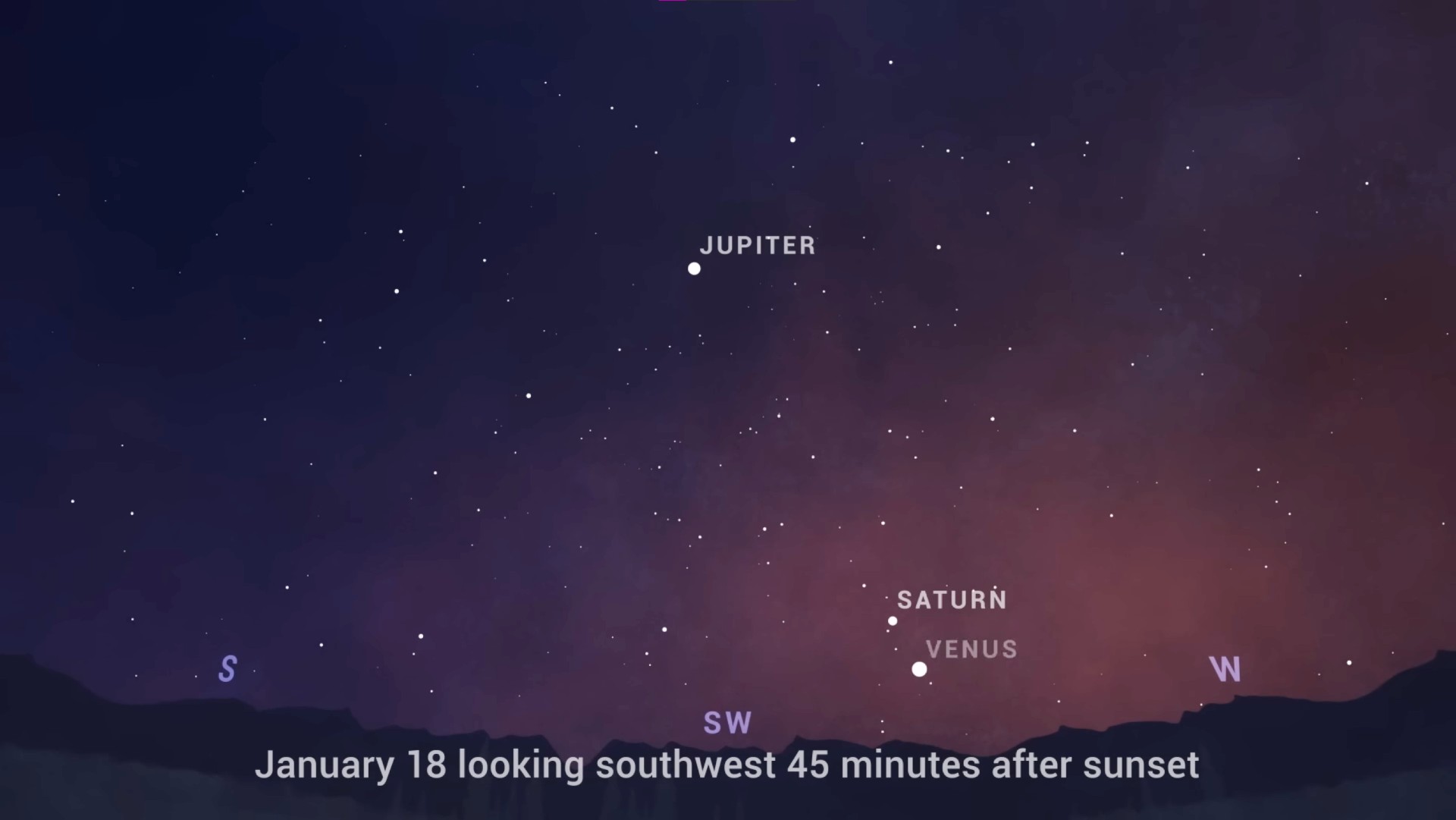Watch Venus and Saturn begin joining up in the night sky this week
The planets will begin closing in on one another ahead of a conjunction on Sunday (Jan. 22).

Venus and Saturn are on a visual crash course, and you can watch the planets make their close approach all this week.
The two planets are, of course, more than 800 million miles (nearly 130 million kilometers) apart on average, so there's no chance of them literally colliding. But their orbits will make them seem like they might from the vantage point of skywatchers here on Earth.
Starting Wednesday (Jan. 18), the planets will begin their close approach toward one another. About 45 minutes after sunset, look to the northwest sky, close to the horizon, and you'll spot the two planets. Venus will be substantially brighter than Saturn — it's the third brightest celestial body in the sky, after the sun and the moon.
Related: See Venus and Saturn snuggle in the sky Sunday (Jan. 22)

Want to get a closer look at Venus and Saturn? We recommend the Celestron Astro Fi 102 as the top pick in our best beginner's telescope guide.
The two planets will make their closest approach, also known as an appulse, on Sunday, (Jan. 22). At the same time, Venus and Saturn will also reach conjunction, which is when planets share the same right ascension (an angular distance used to locate celestial bodies in the night sky).
On Jan. 22, the planets will become visible from New York City at 5:18 pm EST (2218 GMT), according to skywatching site In-the-Sky.org about 14 degrees above the horizon in the southwest sky. (If you need help measuring that distance, it's about one and a half of your fists stacked on top of each other at arm's length.) The pair won't be visible for long, though — they'll sink below the horizon at 6:48 p.m. EST (2348 GMT).
But while they're visible on Sunday (Jan. 22), they'll appear to be extraordinarily close together, just a tiny one-third of a degree apart, according to NASA's Jet Propulsion Laboratory. That means they'll be close enough to see within the field of view of a pair of binoculars, and perhaps even some low-powered telescopes.
Breaking space news, the latest updates on rocket launches, skywatching events and more!
Need to purchase some gear before before the big show? Check out our lists of the best binoculars and best telescopes to help you find the right device for you. If you're looking to catch some photos of the pair, check out our guides on the best cameras for astrophotography and best lenses for astrophotography.
Editor's Note: If you snap a photo of the close encounter between Venus and Saturn and would like to share it with Space.com's readers, send your photo(s), comments, and your name and location to spacephotos@space.com.
Follow Stefanie Waldek on Twitter @StefanieWaldek. Follow us on Twitter @Spacedotcom and on Facebook.

Space.com contributing writer Stefanie Waldek is a self-taught space nerd and aviation geek who is passionate about all things spaceflight and astronomy. With a background in travel and design journalism, as well as a Bachelor of Arts degree from New York University, she specializes in the budding space tourism industry and Earth-based astrotourism. In her free time, you can find her watching rocket launches or looking up at the stars, wondering what is out there. Learn more about her work at www.stefaniewaldek.com.
